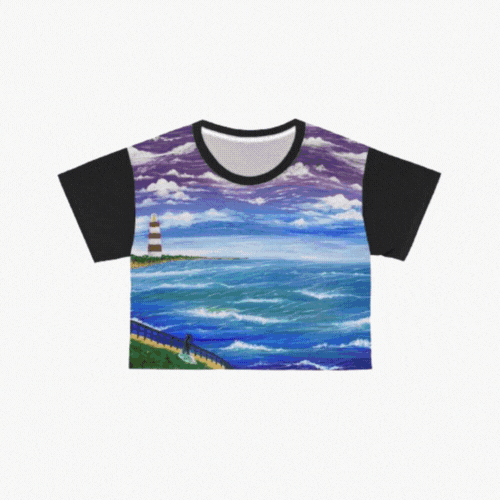
I’m sure we’ve all been in a school art class where we learned different crafts or paintings from a tutorial given by the teacher. You follow along with each step specifically trying to copy the tutorial and by the end everyone has nearly identical art pieces to show. You’ve managed to create something beautiful to take home to your parents but would you be able to replicate it? Or would you have to follow the tutorial again in order to tap into your creative genius?
I’ve come to realize that tutorials can only take you so far; learning creative techniques and painting tips can be much more useful when it comes to making art of your own. So instead of listing off all the steps I followed to create my most recent sunset and sunrise paintings, “Dusk” and “Dawn”, I’ll tell you the most important tips for making your own masterpiece.
1. Start With a Wet Canvas
I learned this from a good friend, Bob Ross. Okay, we’re not really friends but I must attribute much of my painting skill to following along with his videos. Although he often uses oils and I primarily work with acrylics the advice to start with a “liquid white” base is still incredibly helpful. There are plenty of products that can help your base layer stay wet longer but even just a layer of white paint can do the trick. In the video, you can see the first thing that ends up on my canvas is a big glob of white paint that I quickly spread across the canvas before adding color.
Especially when painting skies it’s important to get a seamless blend on the background. When I add a layer of white to my canvas right before mixing the background colors it helps create smooth transitions from the lightest shades of yellow to even the darkest shades of blue. There’s nothing worse than trying to paint on a too-dry canvas, having to go back to the palette for more pigment, and attempting to mix the already-dried paint. Without a wet white base on the canvas, you will end up with a streaky mess for your sky background.
2. Use White to Mix Paint Colors
Although this may sound similar to the previous painting tip, it applies to more than just the background. Early in my painting journey, I would use paint colors straight from the tube, nearly no mixing was involved. This works for rudimentary artwork but eventually, all your pieces look the same because there is no variation in tone or shade. Once I started utilizing the color wheel to create more interesting color pallets I felt like my paintings had harsh and intense pigmentation.
Soon I realized I could use the white for more than just blending my background, I could use it to create more pleasant color palettes. I’ve noticed that many paint colors come so pigmented that if you only mix other pigments it can quickly get super dark. With just a tad of white paint, it won’t necessarily lighten the color but just bring out the depth of the color. In the video, you can see I’ll add white paint to the colors I’m mixing on my palette and to the colors already on the canvas.
3. Choose your brush wisely
Aside from the paint you have, the paintbrushes you have will have a great effect on the style of your painting. In the video, I am using two different paintbrush styles, a natural bristle brush and a pointed round brush. With the natural bristle brush, it is harder to control exactly where the pigment moves on the canvas. Painting the background I needed to use more paint to fully cover the canvas because more pigment would get stuck between the bristles. Blending the paint created a streaky finish where you can clearly see the different brush strokes. When painting the clouds the natural bristles would spread the paint haphazardly so that each cloud was unique.
Using the pointed round brush to blend the background allowed for a fuller and more pigmented application. Paint is evenly dispersed with this type of brush compared to the bristle brush which creates a streaky blend. The pointed tip means I can create much more precise brush strokes when painting the clouds. A smoother brush will leave a smoother surface on the canvas, creating a painting with less obvious texture. As you can see, the type of brush you choose to work with can have a massive effect on the overall composition of the piece.
Painting can be a daunting task, especially without the hours of practice a skilled artist would have. But now you know three new tips from someone who has been painting for years. Always start with a wet canvas, make sure to use white paint for mixing, and choose your paintbrush wisely. Hopefully, you can create your next masterpiece with these new tips.
PO BOX 12, Elk City, OK 73648

Updates on New Paintings, Content, and Product Releases!
Member Exclusive Special Sale Events throughout the Year!
15% Discount on your first order after signing up!